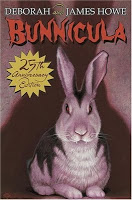We adults spend so much time worrying about our children's reading abilities, that we've created complexities where there don't need to be.
First, keep in mind two things:
Children learn to read when they have an internal incentive to do so. Sure, they can be forced into reading at home or in school, but children who are forced to read and never given the chance to foster the internal DESIRE to read, do not read well or voluntarily, for their own enjoyment. I think this is where public/private schools fail: they force kids through plodding, boring reading exercises that tend to kill the love of reading rather than foster it.
Children are hard-wired with curious minds that yearn to "de-code" the world they live in, IF they are free to de-code it in their own way. The desire to read, if fostered gently, is a natural corollary of that need to "de-code" life. It doesn't have to be a painful, unpleasant process. And it doesn't need to be forced or fretted over. We need to trust in that innate desire to learn. They will ask for the help they need. ("Mom, what does ... spell?") And parents can take opportunities to teach very brief "lessons" here and there, as the opportunity and need arises. (For example, I taught my girls their vowels to the tune of "Old MacDonald".) Do NOT belabor the point. This is about their learning in their way, not about you and your desire to impart knowledge and wisdom. (Where we, in this country, got the idea that children have to be able to read by the time they're ages five or six, I don't know. But I think it's asinine to assume that every child should be ready to read at age five.)
5 of the best, most effective ways to instill and develop a love of reading:
1. Provide a text-rich environment.
This means having books in your home, and making frequent trips to the library. It means that your children need to see you reading books for fun. Children who witness their parents reading for pleasure absorb that this is a desired activity, especially when they see their same-gendered parent reading. (This is especially true of boys.)
2. Strew, or strategically scatter (spread around the house, on obvious surfaces) a mixture of reading materials (e.g. magazines, specific books, maps, phone books, etc.)
A marketing strategy that works! A variety of materials gives kids experience and familiarity with text in all its various forms. And opens doors of discovery and discussion, and new interests.
3. Read aloud to your children DAILY with expression, proper syntax and cadence.
Let me point out that audiobooks are good, but they should never replace YOU, as the read aloud adult. There is something about the physical act of reading aloud with your children sitting beside you or near you that helps their brains process the reading experience in a personal way. If your child is in a two parent home, both of you should be reading aloud to your children. It broadens their "de-coders" to hear books read "live" by different people. If you can do only one thing from this list, make it this one. Reading aloud with expression plays a HUGE role in your child's reading and language development, and is absolutely essential to foster a love of reading. This step is also key to keeping alive the love of reading in your pubescent boys, who for some reason frequently become more averse to reading for pleasure during middle grade years.
4. Limit your children's viewing of television and their online/video gaming activity.
This is especially important in those early, pre-reading years. I know this advice will not be popular in some quarters, but TV, computers, and video gaming teach a child's brain to rely on extremely quick, constantly changing images and functions, in other words, rapid stimulation. Children who live in visual media-intense households have very little or no patience with text-rich experiences, becasue their brains haven't built those pathways. Books to media-saturated kids are boring compared to constant, ever-changing images. I have seen this time and again as the common denominator over the years with friends who lament their child's disinterest in books and reading.
5. Find books that appeal to them, that they want to pick up and look at, regardless of the "reading level."
Yes, this includes comics. This doesn't have to be books that necessarily appeal to you and your desire to introduce them to "good" literature. If the reading level of the book they want to read is beyond their ability, or all they seem to want to read are books below their reading level, don't stress. It is the physical act of reading a desired book that is so critical. Also know that you don't have to read everything out loud. It helps keep their interest piqued if there are books that they want to read, but you won't read. I'm speaking here of kids ages 4 and up. If your baby or toddler brings you a book to read, read it, no matter what. If it's one you don't want to read, you can grab a more desirable one, and simply say "How about we read this one instead?" And if they bring you something that you know isn't going to keep them interested for long, just pull them on your lap and talk about the pictures or what's happening in the story.
There you have it: simple steps you can take to foster a love of reading. Your kids will take it from there. Relax and enjoy the ride. (But keep the books coming.)
Questions? Concerns? Comments?
(Also check out an earlier post Reading Aloud: The "Secret" to Reading Success.)




.jpg)


